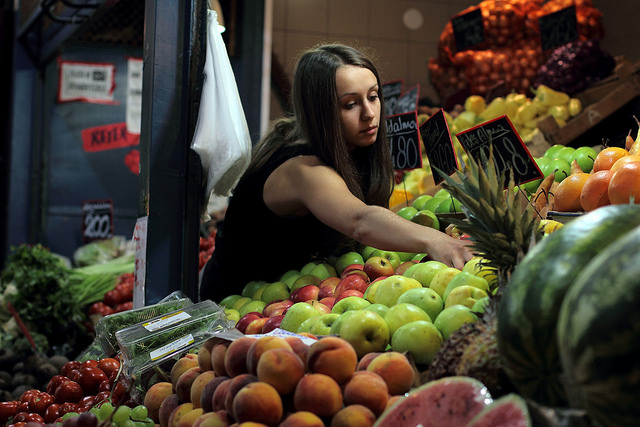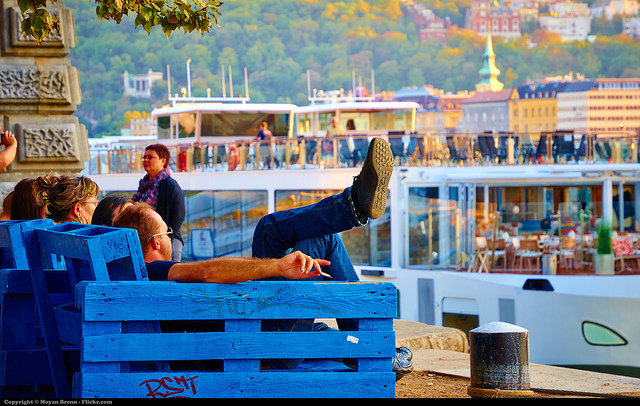Since the days in which the cities of Buda and Pest were combined in 1873, Budapest, capital city of Hungary, became one of the most amazing and largest urban and cultural destinations in Central Europe. Its history goes back to the ancient Celts and Romans, and during the centuries, the city has served as a point of encounter where peoples and cultures have melted together, until they became a unique culture.
Modern day Budapest, home to numerous UNESCO World Heritage Sites, is one of the most beautiful jewels of Central Europe, one that you can visit either for days, or as part of a short, weekend trip. In both cases, you will have the chance to enjoy a vibrant and exciting city full of places, monuments, and other landmarks to visit.
You will be probably too tired or will not have enough time to take a long walk in the city when you just arrive. In that case, the best option for you is to relax a bit with a short walk downtown. Go to Váci Utca, the most important street in Budapest, and enjoy its architectural elegance and the different cafés and stores that you can find in it. You will be impressed by its magnificent views at night, while the Danube’s extraordinary presence flowing from north to south next to you. Then go to Andrássy Utca, the second most important street in the city, and included in the UNESCO World Heritage Committee list of World Heritage sites in 2002. You will find remarkable cafés, restaurants, theatres, luxury boutiques, besides noticeable buildings such as the State Opera House, the Zoltán Kodály Memorial Museum and Archives, and the Hungarian University of Fine Arts.
Once you have recovered some energies, you can start your visit in Buda the following days. You can get there by bus or the funicular, but can also enjoy a good walk to the top. There you will find the Buda Castle, where you will have one of the best views of the whole city. You can stay in the Castle and its surroundings for a while, have some rest, drink something, and then take Támok Utca to get to Matthias Church and the Fisherman’s Bastion, two of the most emblematic places in Budapest, particularly at night. The Fisherman’s Bastion, whose seven towers represent the seven Magyar tribes that founded Hungary, also gives you the chance to take the best possible pictures of Hungary’s Parliament Building that you can imagine.

Image courtesy of Bruno at Flickr.com
After you have spent some time in the Buda Castle area, you must walk. And you must do it, because otherwise you will lose the chance to enjoy the experience of crossing by foot the Széchenyi Chain Bridge, the first permanent bridge across the Danube in the city. This is a suspension bridge that spans over the Danube and connects Buda and Pest, with breathtaking views of the river. It was opened in 1849, and still occupies a very important cultural and symbolic place in the collective imagination not only of Budapest, but of Hungary as a whole.
Next you can take a closer look at the Parliament Building for a couple of hours, or go directly to the Central Market Hall, the largest indoor market in Budapest, to have the experience of buying with locals, try some traditional food, or just enjoy the atmosphere of the place. Or if you have more time, remove all the tensions of your trip in one of Budapest’s famous baths. After all, it is no accident that people call Budapest the City of Baths, and this is due to Hungary’s richness of thermal springs, which can also be found in its capital city. There you can find too traditional Turkish baths that date back to the 16th and 17th centuries.

Image courtesy of Moyan Brenn at Flickr.com
Another place that you cannot fail to visit is Heroes’ Square, one of the reasons why people often call Budapest the Paris of the East. This is the the largest square in the entire city, and was laid out in 1896 to commemorate the 1000-year-old history of the Magyars, the tribes that founded Hungary. It includes the Millennium Monument, a 36-meter column that has on its top a figure of the Archangel Gabriel. The Millennium Monument was unveiled in the late 19th century, and represents the conquering Magyar Prince Árpád with some of his fellow warriors.
Much more things to do in Budapest could be highlighted here. A cruise along the Danube, perhaps one time during the day, and another time during the night, to enjoy the city’s light glittering on the water, is indeed a must, specially for those who come to the city for the first time. But it is also a good idea to take some time and go to the Danube Promenade, a riverside walk extending from the Széchenyi Chain Bridge to the Elisabeth Bridge. There you will find the Shoes on the Danube Bank memorial, a series of steel sculpted shoes that commemorate Jews shot in World War II.

